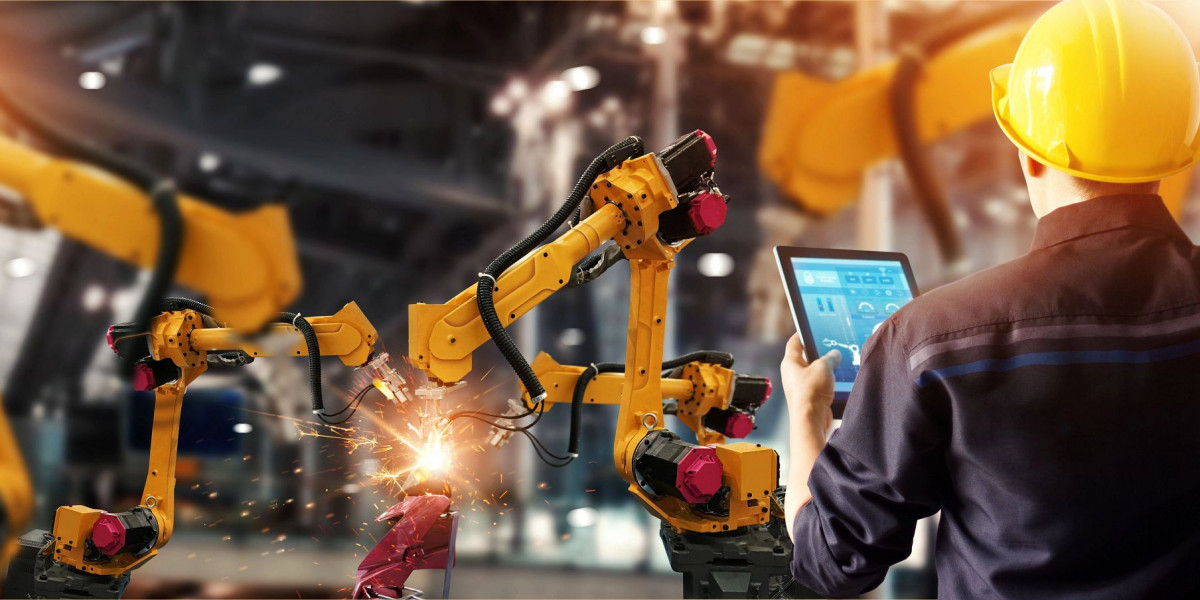In today’s rapidly evolving industrial landscape, the concept of machine safety has become more critical than ever. As industries continue to embrace automation and advanced machinery, ensuring the safety of operators, equipment, and surrounding environments has gained prominence. The global machine safety market is poised for significant growth due to increasing regulatory requirements, technological advancements, and heightened awareness around workplace safety.
Machine safety refers to the set of procedures and technologies employed to ensure machines and systems operate without causing harm to humans or the environment. This involves everything from equipment design and safety controls to safety training for operators. The market for these solutions is largely driven by a few key factors, including stringent safety regulations, the growing adoption of automation, and the rise in industrial accidents. The dynamics of this market are influenced by several elements such as technological innovations, the need for compliance, and the growing importance of risk management.
Technological Advancements and Integration of IoT
One of the most significant drivers of growth in the machine safety market is technological advancements. The integration of the Internet of Things (IoT) and smart sensors in machinery allows for better monitoring and real-time detection of safety hazards. IoT-enabled devices can continuously analyze machine performance and automatically trigger alerts in case of anomalies or potential risks. This proactive approach significantly enhances workplace safety by preventing accidents before they occur.
Moreover, advancements in safety control systems, including programmable safety controllers, safety relays, and emergency stop systems, have made machines smarter and safer. These innovations are essential in minimizing downtime and preventing accidents, which further enhances the overall safety performance of industrial operations.
Regulatory Push and Compliance
Governments and international organizations have imposed stringent regulations to safeguard the well-being of workers, and these regulations continue to evolve as safety technology improves. Regulations such as the European Machinery Directive (2006/42/EC), ISO 13849, and the Occupational Safety and Health Administration (OSHA) standards in the United States have become crucial to driving the demand for machine safety solutions.
The increasing need for compliance with these regulations has propelled industries to adopt safety measures, particularly in high-risk sectors such as manufacturing, automotive, pharmaceuticals, and food processing. Companies that fail to meet these standards risk facing fines, legal challenges, and potential damage to their brand reputation. As a result, the demand for machine safety systems that enable compliance with these regulations is set to rise.
Adoption of Automation and Robotics
Another key factor contributing to the growth of the machine safety market is the growing adoption of automation and robotics across industries. As manufacturers strive for increased efficiency and productivity, automation technologies, such as robotic arms, automated guided vehicles (AGVs), and conveyor systems, are being deployed in large numbers. However, the introduction of these automated systems brings new safety challenges, as human interaction with machines becomes more complex.
To mitigate these risks, safety systems like safety-rated controllers, light curtains, and safety mats are essential for safeguarding employees working alongside automated machines. Furthermore, collaborative robots (cobots) have become more popular in industries where operators and robots work together. Ensuring the safety of these collaborative setups requires robust safety mechanisms, which is driving the demand for machine safety solutions.
Emerging Market Trends and Opportunities
The machine safety market is also witnessing the emergence of new trends, including the rise of safety as a service (SaaS) platforms. These platforms offer a combination of hardware and software solutions that help companies monitor, analyze, and optimize their safety systems in real time. This trend is gaining traction as industries realize the value of predictive maintenance and data analytics in preventing safety incidents.
Additionally, emerging economies in Asia-Pacific and Latin America present significant growth opportunities for the machine safety market. As industrialization accelerates in these regions, the need for safety solutions becomes more pressing. Countries like China, India, and Brazil are investing heavily in modernizing their industrial sectors, which creates a growing demand for machine safety systems.
Challenges and Restraints
Despite the positive growth outlook, there are several challenges that the machine safety market faces. The high cost of implementing advanced safety solutions can be a barrier, especially for small and medium-sized enterprises (SMEs). Furthermore, the integration of safety technologies into legacy systems poses a significant challenge for many manufacturers.
Another obstacle is the lack of skilled personnel who are trained in the implementation and maintenance of machine safety systems. This skill gap can delay the adoption of safety measures, especially in industries where new technologies are being introduced at a rapid pace.
Conclusion
The machine safety market is experiencing dynamic growth driven by technological advancements, regulatory pressures, and the increasing adoption of automation. While challenges remain, particularly in terms of cost and skill gaps, the opportunities for growth are vast. As industries across the globe continue to prioritize safety, the demand for innovative, effective, and compliant machine safety solutions will remain strong.
Learn More : https://www.pristinemarketinsights.com/machine-safety-market-report









